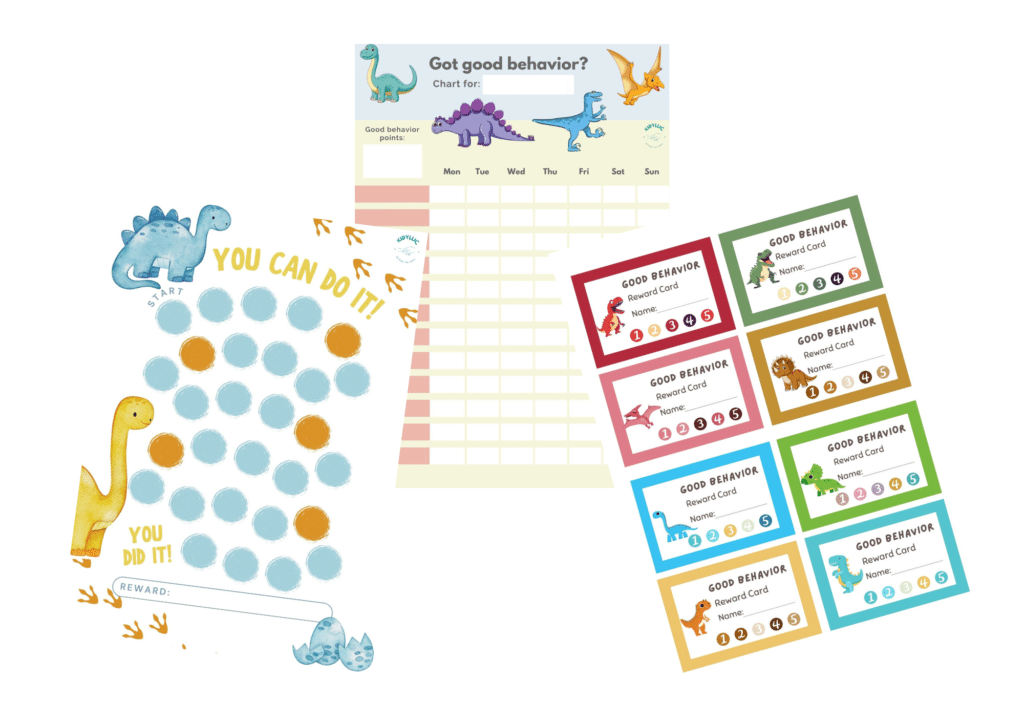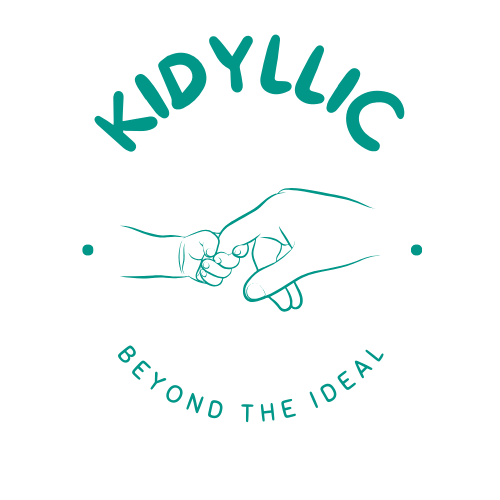
Table of Contents
If you’ve ever felt exhausted trying to manage your child’s behavior, you’re not alone. Many parents look for tools to encourage positive actions without constant frustration. A behavior chart can be a game-changer, offering structure and motivation. But does it really work? As a mom who has tried it all—from sticker charts to elaborate reward systems—I’ll share insights, expert advice, and personal experiences to help you decide if a behavior chart is right for your family.
What Is a Behavior Chart and How Does It Work?
The Psychology Behind Behavior Charts
Behavior charts are founded on the principle of positive reinforcement. The Journal of Applied Behavior Analysis says consistent reinforcement of Positive behavior. increases the likelihood of it being repeated. Studies have shown that children are more likely to engage in positive behavior when they receive immediate, tangible feedback. The visual aspect of behavior charts plays a crucial role in this reinforcement, making it easier for children to connect their actions with outcomes. When children see their progress visually, they develop motivation, self-discipline, and a greater sense of accomplishment, reinforcing the habit of goal-setting from an early age.
Why Positive Reinforcement Matters
Children thrive on encouragement. A study from the American Psychological Association found that rewards for positive behavior improve a child’s self-regulation skills. Studies indicate that children who receive structured feedback are more likely to internalize positive behaviors. Using a behavior chart provides immediate feedback, helping kids understand expectations without constant verbal reminders. Additionally, visual reinforcement makes abstract concepts like responsibility and patience more tangible, reinforcing long-term behavioral growth.
How to Create an Effective Behavior Chart
Choosing the Right Goals for Your Child
Start small. Choose two to three specific behaviors you want to encourage, such as “brushing teeth before bed” or “using kind words.” Keep the language simple and clear so your child can understand and track their progress easily. When my son was struggling with morning routines, I made a chart that listed each step, from waking up to putting on shoes. We added small illustrations next to each task to make it more engaging. Within two weeks, mornings became much smoother, and he even started reminding me of the next steps himself!
Types of Behavior Charts and When to Use Them
- Sticker Charts: Ideal for younger children who respond well to visual rewards. These charts work best when paired with colorful stickers featuring characters or themes that excite the child. For instance, using superhero or animal-themed stickers can increase engagement. Additionally, keeping the reward process immediate—such as giving a sticker right after a positive action—reinforces good behavior more effectively. A study in child development suggests that visual tracking systems like sticker charts help children build a stronger association between actions and outcomes, making it easier for them to develop consistent habits.
- Checklists: Great for kids who prefer structure and independence. These charts provide a clear, step-by-step guide that helps children take ownership of their tasks. For example, a morning routine checklist can outline each step from brushing teeth to packing a school bag, reinforcing self-sufficiency. Studies suggest that structured checklists enhance executive functioning skills, allowing kids to develop better planning and organization habits over time.
- Point-Based Systems: Effective for older children who can work towards long-term goals. These systems work well for kids who understand delayed gratification, allowing them to save up points for bigger rewards like a family outing or extra screen time. One advantage of point-based systems is their flexibility—you can tailor the value of points to match specific behaviors and goals. Additionally, research suggests that these systems help children build decision-making skills by allowing them to prioritize and work towards meaningful rewards.
Want to start using a Behavior Chart right away? Download our free printable pack with a weekly tracking chart, a progress board, and reward cards to make positive reinforcement fun and effective!
Pros and Cons of Using a Behavior Chart
Success Stories: When It Works Wonders
Many parents swear by behavior charts, myself included. When my daughter was three, she resisted bedtime every night. I introduced a sticker chart, choosing stickers of her favorite animals to make it more exciting. We placed the chart on the fridge where she could proudly track her progress. Within a week, she was excited to follow the bedtime routine. The visual progress helped her feel in control, and it also sparked a sense of accomplishment that made her look forward to bedtime instead of dreading it.
Common Pitfalls and How to Avoid Them
Some parents find that charts lose effectiveness over time. This often happens when rewards become too predictable or lose their appeal. To avoid this:
- Rotate rewards to keep motivation high. For example, instead of offering the same treat repeatedly, try mixing in small experiences like choosing a movie for family night, earning a picnic in the park, or getting extra playtime. This keeps the reward system dynamic and engaging for your child, preventing boredom and maintaining their enthusiasm.
- Ensure rewards are meaningful but not excessive. For instance, focus on rewards that align with your child’s interests, such as a fun outing to their favorite park or allowing them to choose a family activity for the weekend. Meaningful rewards create stronger emotional connections, making the behavior chart more effective over time.
- Gradually phase out the chart as behaviors become habits by reducing the reliance on external rewards. For example, as your child masters a specific behavior, shift the focus from tangible rewards to verbal praise or shared moments of acknowledgment. This transition helps children internalize the satisfaction of their accomplishments, fostering intrinsic motivation for continued positive actions.
How to Keep Your Child Engaged and Motivated
The Role of Rewards and Consequences
Rewards should be balanced. Instead of material gifts, try experiences like extra storytime, choosing a family activity, or even letting your child pick the menu for dinner one evening. Studies show that intrinsic motivation—doing something because it feels good—leads to longer-lasting behavioral changes. For example, when my son earned extra reading time as a reward, it not only reinforced his positive behavior but also fostered a love for books. Personalizing rewards based on your child’s interests keeps the system engaging and impactful.
Adjusting the Chart as Your Child Grows
As children develop, their needs change. Reassess the chart every few months to ensure it remains relevant. For instance, as my preschooler grew older, I noticed he needed more independence, so we transitioned from simple sticker rewards to a point-based system that allowed him to save up for bigger rewards. What worked for my preschooler wasn’t effective for my seven-year-old, so I adapted the system to match his maturity level and found that giving him more responsibility kept him engaged and motivated.
Real Parent Experiences: The Emotional Side of Behavior Charts
When It Feels Like It’s Not Working
There were times I felt defeated when my child ignored the chart. In those moments, I reminded myself that setbacks are part of the process. It’s important to remember that no method is foolproof, but small adjustments—like simplifying the chart or adjusting rewards—can make a big difference. Consistency and patience are key, even when progress feels slow.
Learning to Adapt and Stay Consistent
Flexibility matters. If a chart isn’t working, tweak the goals or make it more interactive. For example, try incorporating your child’s favorite themes or interests, such as animals or superheroes, into the chart design. Letting your child help design their own chart increases engagement and ownership by making the process feel more fun and personalized. Additionally, consider asking them for input on rewards or setting goals collaboratively to boost their motivation.
FAQ: Behavior Chart for Parents
Do behavior charts really work for all children?
Not necessarily. While many children respond well, some may need additional strategies like verbal encouragement or alternative reinforcement techniques.
What are the best age groups for using a behavior chart?
Behavior charts are most effective for children aged 3-10. Older kids may benefit more from self-monitoring techniques.
How do I handle resistance from my child?
Involve them in the process. Allow them to set some goals and choose their own rewards to create a sense of ownership.
Conclusion
A behavior chart can be a powerful tool for encouraging positive habits in children. However, its success depends on consistency, flexibility, and parental involvement. If you’re ready to try it, start with small, achievable goals and adapt as needed.
Want more parenting strategies? Check out our guide on Positive Discipline Techniques or explore expert-backed advice on Psychology Today. Let’s support our kids in developing good habits together!
